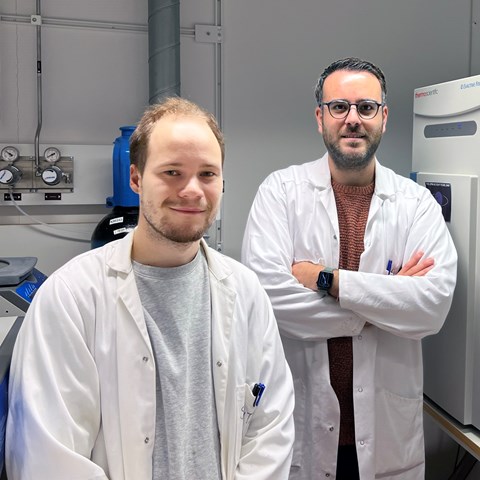Contact
Department of Aquatic Sciences and Assessment, Division of Environmental Organic Chemistry and Ecotoxicology

Alberto Celma and Svante Rehnstam from SLU are training to be able to answer this question. They participate in a project that has the goal of increasing the possibility of identifying unknown substances in drinking water quickly and accurately in times of crisis. Alberto and Svante's contribution is their knowledge on how to find unknown substances in water.
In order for the Swedish population to have a safe and clean drinking water supply, there are many aspects to work with. Since we at the SLU have expertise in water and different ways of analysing it, we can contribute knowledge about how to check that drinking water is safe.
- This is an exercise that has been conductedc yearly since a few years back, but this is the first time SLU is involved, says Alberto.
The project consists of exercises for situations where a routine analysis of drinking water shows traces of some substance that should not be there, perhaps because of an accident or because the water was unintentionally contaminated.
The participants in the project represent different societal functions that would be involved in a similar real-life situation.
- We are split into two teams that work independently, says Svante. Both teams do the same investigations. In the end, we compare the results to see if we end up with the same conclusions.
Together, they can learn from each other to be able to make faster and more accurate assessments in the future and in real situations.
- Our specific competence is our experience in non-target-screening, says Svante.
- When routine labs analyse water, they often focus on the same, known substances, continues Alberto. If this would be a real situation, it would be challenging for them to find new ones. Finding unknown substances is something we do well here at SLU where we both have the competence and equipment to do so. We have to keep in mind that even the cleanest water has millions of compounds in it, most of them naturally occurring. To find which ones are different this time is really challenging.
For the 2022 exercise, participants had to dedicate their working hours for one week to complete their tasks.
- We received the samples Tuesday morning and had a quick meeting within the group to decide how to process the samples, says Alberto. We started the analysis in the lab on that day and had the data and the results from the instrument on Wednesday. Then we processed the data, both via software and manually.
Alberto and Svante agree that they probably missed something in their analysis and look forward to comparing their results with the other group. That way, they can learn a lot about how to make even more accurate and even faster analysis during the next exercise, or in real life.
The Swedish Food Agency is the project leader and the Swedish Civil Contingencies Agency is the financier.